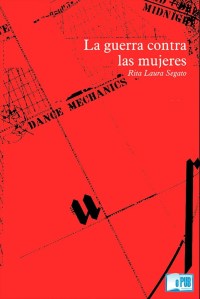Los pichiciegos de Fogwill
Por Jorge Izquierdo
PhD en Estudios Hispánicos de la Universidad de Columbia Británica (University of British Columbia)
Actualmente Docente y Coordinador Académico de UDLA Honors, Universidad de las Américas, Quito-Ecuador
Co-fundador de Editorial Festina Lente
 Planteo esta breve lectura de la novela de Fogwill en el marco de la conversación con Diego Sztulwark y el ciclo organizado por Ana Vivaldi, a quienes agradezco por su input reciente al Virtual Koerner’s.
Planteo esta breve lectura de la novela de Fogwill en el marco de la conversación con Diego Sztulwark y el ciclo organizado por Ana Vivaldi, a quienes agradezco por su input reciente al Virtual Koerner’s.
Los pichiciegos es una novela sobre la Guerra de las Malvinas, y en un principio, debo admitirlo, la testosterona detrás del proyecto, no solo por lo excesivamente masculino del tema sino de la escritura me desalentó un poco o me aburrió. Pero la novela de Fogwill funciona más y mejor mientras más se escarba en ella. El planteamiento no gira alrededor de la trama de los soldados (a la final sabemos quién va a ganar la guerra) sino que se construye como un espiral, los personajes vuelven y repiten reflexiones sobre el miedo, sobre el frío y el calor, sobre los detalles autóctonos de cada una de sus comunidades específicas, sobre el archivo y la escritura.
Además, es un texto que se ofrece como metáfora aguda de temas que se desprenden del conflicto armado por las Malvinas, ocurrido a inicios de los ochenta: el colonialismo, el mestizaje, la figura del criollo, el mundo natural. Es decir, calza muy bien en propuestas destinadas a pensar, reflexionar e interrogarse acerca de lo latinoamericano, acerca del Sur.
La novela sigue los pasos de un grupo de alrededor de veinte y cinco soldados desertores. Tienen pactos turbios con algunos británicos, pero que no les garantiza nada, se esconden de sus propios camaradas argentinos y son testigos privilegiados de la derrota bélica, que no puede ser otra que la derrota del proyecto Estado-nación. A los pichis los lidera un grupo conocido como los Reyes Magos. Sus circunstancias se conectan muy bien con, por ejemplo, las tantas historias sobre Lope de Vega, el pichi original, si se quiere. Renegado, violento, solitario, pero donde Lope tiene sueños de grandeza los Magos desean para ellos y su grupo cosas mucho más terrenales, como polvo químico para cubrir heces. También se me ocurre que la naturaleza de los pichis ayuda a entender el carácter criollo: personas de origen europeo nacidos en suelo americano y destinados a permanecer en él. Tienes ciertos privilegios (puertas adentro) pero eres desposeído apenas te colocas ante el Imperio. Por corregir esa injusticia lucharon figuras como Bolívar, Sucre y San Martín (otros Reyes Magos, otros pichis)… pero cometieron muchos otros errores en el camino y murieron traicionados por el mismo vuelco independentista.
Con la lectura de la novela de Fogwill me puse a pensar más en algo que Sztulwark dijo en un momento de la conversación que tuvimos con él. Dijo algo así como que estaba convencido de que las Madres de la Plaza de Mayo fueron las responsables directas de salvar a su país o rescatarlo, no me acuerdo las palabras exactas.
Más allá de lo que se pueda pensar ahora, en términos críticos, de las Madres de la Plaza de Mayo, por poner otro ejemplo del Cono Sur, en los movimientos sociales que luego conformaron los recientes gobiernos del Frente Amplio en el Uruguay, me pareció válido pensar en esto que planteaba Sztulwark, que en un determinado momento esos grupos, resistiendo a la dictadura, dotaron de sentido a algo que a todas luces perdía todo sentido, pero habría que entender que a la larga es un gesto conservador no progresista, valor, este último, al que a veces asociamos los procesos de la izquierda, en cuanto a que buscaron conservar, literalmente, el Estado-nación.
La postura de los pichiciegos de Fogwill frente al proyecto argentino tampoco es progresista, pero sí es radical: cavar un hueco en la tierra, desconsiderando que afuera existen los países, como insectos inmundos. ¿Es esa es la auténtica y pobre postura del criollo lationamericano? Casi al inicio de la novela, uno de los pichis quiere saber por qué “el uruguayo” está peleando en la guerra:
-…¿Si vos sos uruguayo, por qué carajo estás aquí?
-Porque me escribieron argentino. ¡Soy argentino!
-Che… ¿y por qué te dicen uruguayo?
-Porque yo nací ahí, vine de chico…
-¡Es una mierda el Uruguay!
-Sí, mi viejo dice que es una mierda. (Fogwill, 16-17)
Se refieren, creo, a que allá hay dictadura también. Ese país también está jodido por eso.
Existe un marco teórico, desarrollado por el antropólogo francés Claude Lévi-Strauss, para entender la organización de sociedades primitivas según el modelo de las sociedades frías y el modelo de las sociedades calientes. Lo frío en este caso, y reduciendo las cosas al mínimo, tiene que ver con sistemas estáticos, una organización social que se asienta, inmóvil. Lo caliente, en cambio, tiene que ver con una inclinación natural hacia la mutación constante y el movimiento. En la novela de Fogwill hay un planteamiento sobre algo muy similar pero en términos de sobrevivencia. Estar frío significa estar moribundo, estar helado es estar muerto. Estar caliente aparece muchas veces en relación del impulso sexual, otro tema constante del libro, cómo, en medio de la guerra, estos soldados desearían estar “culeando”.
Por último, y esta es la parte que me interesa, el tema es planteado a manera de transición. Una forma de negar que existan cosas tan monolíticas como el frío y el calor, para empezar, porque están conectadas muchas veces, y ese es el punto. Según uno de los pichis: “estás dos o tres días en el calor y lastima salir al frío. Pero los que estuvieron un tiempo en el calor –parece mentira- resisten el frío más y por más tiempo” e insiste “el que estuvo en el frío, siempre en el frío, está frío, olvidó. Está listo, está frío, no tiene más calor en ningún lado y el frío lo come, le entra, ya no hay calor en ningún sitio, lo único que puede calentar es el frío, quedarse quieto, y en cuanto puede imaginar que ese frío quieto es calor, se deja estar al frío, comienza a helarse y el frío ya deja de doler y termina”; y es casi igual si estás todo el tiempo en el calor: “…te quedás como dormido y ya nada te gusta, ni el frío ni el calor, ni el aire, ni vos mismo: nada te gusta” (Fogwill, 140-141). Sospecho que estas palabras podrían servir para adentrarse y entender ciertos temas relacionados a la memoria cultural de América Latina.
Todxs somos pichis, nada nos gusta.
Fogwill. (2006). Los pichiciegos. Buenos Aires: Interzona

 In her chapter, “Patriarchy: From the Margins to the Center” (from La guerra contra las mujeres [2017]), Rita Segato goes further. We are all trained to be psychopaths now, she tells us, as part of a “pedagogy of cruelty” that is the “nursery for psychopathic personalities that are valorized by the spirit of the age and functional for this apocalyptic phase of capitalism” (102). Segato presents a brief reading of Stanley Kubrick’s A Clockwork Orange to make her point, though what she sees as “most extraordinary” about the film is that the shock with which it was received when it came out (in 1971) now seems to have almost totally dissipated. What was once taken as itself an almost psychopathic assault on the viewer’s senses is now just another movie; this shift in our sensibility is “a clear indication [. . .] of the naturalization of the psychopathic personality and of violence” (102). The narcissistic “ultra-violence” of the gang of dandies that the film portrays is now fully incorporated within the social order that it once seemed to threaten.
In her chapter, “Patriarchy: From the Margins to the Center” (from La guerra contra las mujeres [2017]), Rita Segato goes further. We are all trained to be psychopaths now, she tells us, as part of a “pedagogy of cruelty” that is the “nursery for psychopathic personalities that are valorized by the spirit of the age and functional for this apocalyptic phase of capitalism” (102). Segato presents a brief reading of Stanley Kubrick’s A Clockwork Orange to make her point, though what she sees as “most extraordinary” about the film is that the shock with which it was received when it came out (in 1971) now seems to have almost totally dissipated. What was once taken as itself an almost psychopathic assault on the viewer’s senses is now just another movie; this shift in our sensibility is “a clear indication [. . .] of the naturalization of the psychopathic personality and of violence” (102). The narcissistic “ultra-violence” of the gang of dandies that the film portrays is now fully incorporated within the social order that it once seemed to threaten.